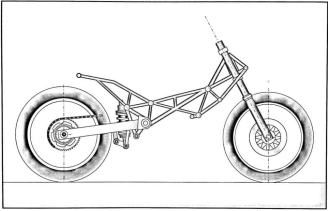The lightweight composite material design for automotive industry
DOI:
https://doi.org/10.55225/sti.508Keywords:
composites, automotive industry, design of composite structuresAbstract
The article presents the concept of a glass fiber reinforced composite in an epoxy matrix that can be used in a motorcycle frame. Motorcycle frames types enabling the composites usage were analyzed. Composite material samples with different glass fibers orientations were produced using the pin method. The manufactured composite material was subjected to physicochemical tests to determine basic strength properties, density, work of destruction, and microscopic observation was carried out.
Downloads
References
Ashby MF. Materials Selection in Mechanical. 4th ed. Burlington: Butterworth-Heinemann; 2011. DOI: https://doi.org/10.1016/B978-1-85617-663-7.00005-9 Google Scholar
Ashby MF, Jones DRH. Materiały inżynierskie. [T.] 1. Właściwości i zastosowania. Warszawa: Wydawnictwo Naukowo-Techniczne; 1995. Google Scholar
Ashby MF, Jones DRH. Jones, Materiały inżynierskie. T. 2. Kształtowanie struktury i właściwości, dobór materiałów, dobór materiałów. Warszawa: Wydawnictwo Naukowo-Techniczne; 1995. Google Scholar
Ashby M, Shercliff H, Cebon D. Inżynieria materiałowa. T. 1. Łódź: Wydawnictwo Galaktyka; 2011. Google Scholar
Cocco G. Motorcycle Design and Technology: How and Why. Milan: Giorgio Nada; 2013 Google Scholar
Feraboli P, Masini A, Taraborrelli L, Pivetti A. Integrated development of CFRP structures for a topless high performance vehicle. Composite Structures. 2007;78(4): 495–506. https://doi.org/10.1016/j.compstruct.2005.11.011. DOI: https://doi.org/10.1016/j.compstruct.2005.11.011 Google Scholar
Liu Q, Xing H, Ju Y, Ou Z, Li Q. Quasi-static axial crushing and transverse bending of double hat shaped CFRP tubes. Composite Structures. 2014;117:1–11. https://doi.org/10.1016/j.compstruct.2014.06.024. DOI: https://doi.org/10.1016/j.compstruct.2014.06.024 Google Scholar
O’Dea N. Motorcycle swingarm redesigned in carbon composite. Reinforced Plastics. 2011;55(6):36–41. https://doi.org/10.1016/S0034-3617(11)70184-9. DOI: https://doi.org/10.1016/S0034-3617(11)70184-9 Google Scholar
Foale T. Motorcycle Handling and Chassis Design: The Art and Science. 2nd ed. [S.l.]: Tony Foale; 2006. Google Scholar
Cossalter V. Motorcycle Dynamics. 2nd ed. [S.l.]: Lulu Com; 2006. Google Scholar
Sathishkumar TP, Satheeshkumar S, Naveen J. Glass fiber-reinforced polymer composites: A review. Journal of Reinforced Plastics and Composites. 2014;33(13):1258–1275. https://doi.org/10.1177/0731684414530790. DOI: https://doi.org/10.1177/0731684414530790 Google Scholar
Morgan P. Properties of carbon fibers. In: Morgan P, editor. Carbon Fibers and Their Composites. Boca Raton: Taylor & Francis; 2005. DOI: https://doi.org/10.1201/9781420028744 Google Scholar
Fejdyś M, Łandwijt M. Włókna techniczne wzmacniające materiały kompozytowe. Techniczne Wyroby Włókiennicze. 2010;18(1/2):12–22. Google Scholar
Massalski J, Massalska M. Fizyka dla inżynierów. Cz. 1. Fizyka klasyczna. Warszawa: Wydawnictwo WNT; 2012. Google Scholar
Halliday D, Resnick R, Walker J. Fizyka dla inżynierów. Cz. 2. Fizyka współczesna. Warszawa: Wydawnictwo WNT; 2013. Google Scholar
Bowles KJ, Frimpong S. Relationship Between Voids and Interlaminar Shear Strength of Polymer Matrix Composites. San Diego: NASA; 1991. Google Scholar
Dobrzański LA. Materiały inżynierskie i projektowanie materiałowe. Warszawa: Wydawnictwo WNT; 2006. Google Scholar

Downloads
Published
How to Cite
Issue
Section
License
Copyright (c) 2023 Katarzyna Suchorowiec, Piotr Szatkowski, Ewa Szczepanik, Rafał Twaróg, Michał Kisilewicz, Jacek Gralewski

This work is licensed under a Creative Commons Attribution-ShareAlike 4.0 International License.



